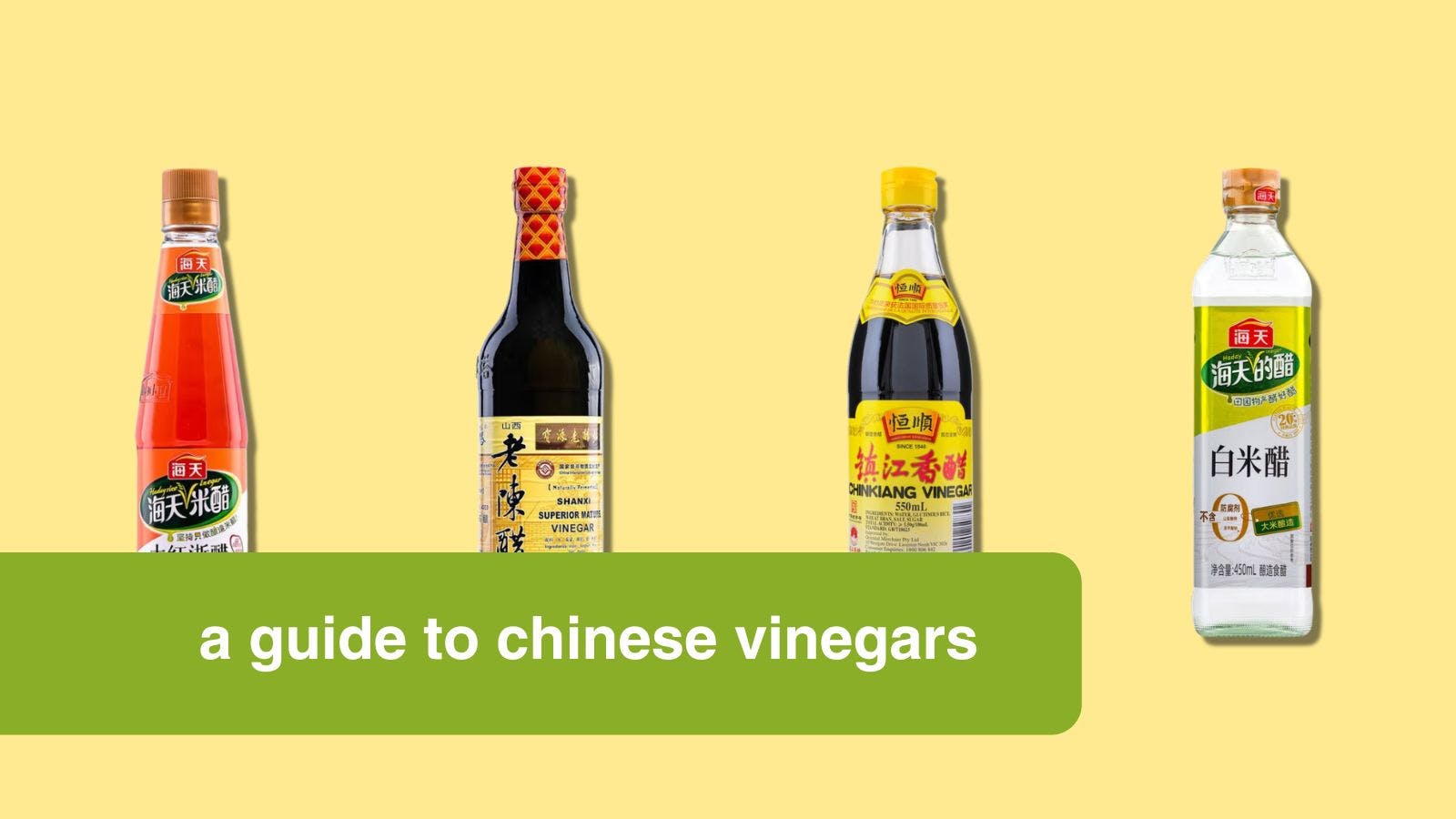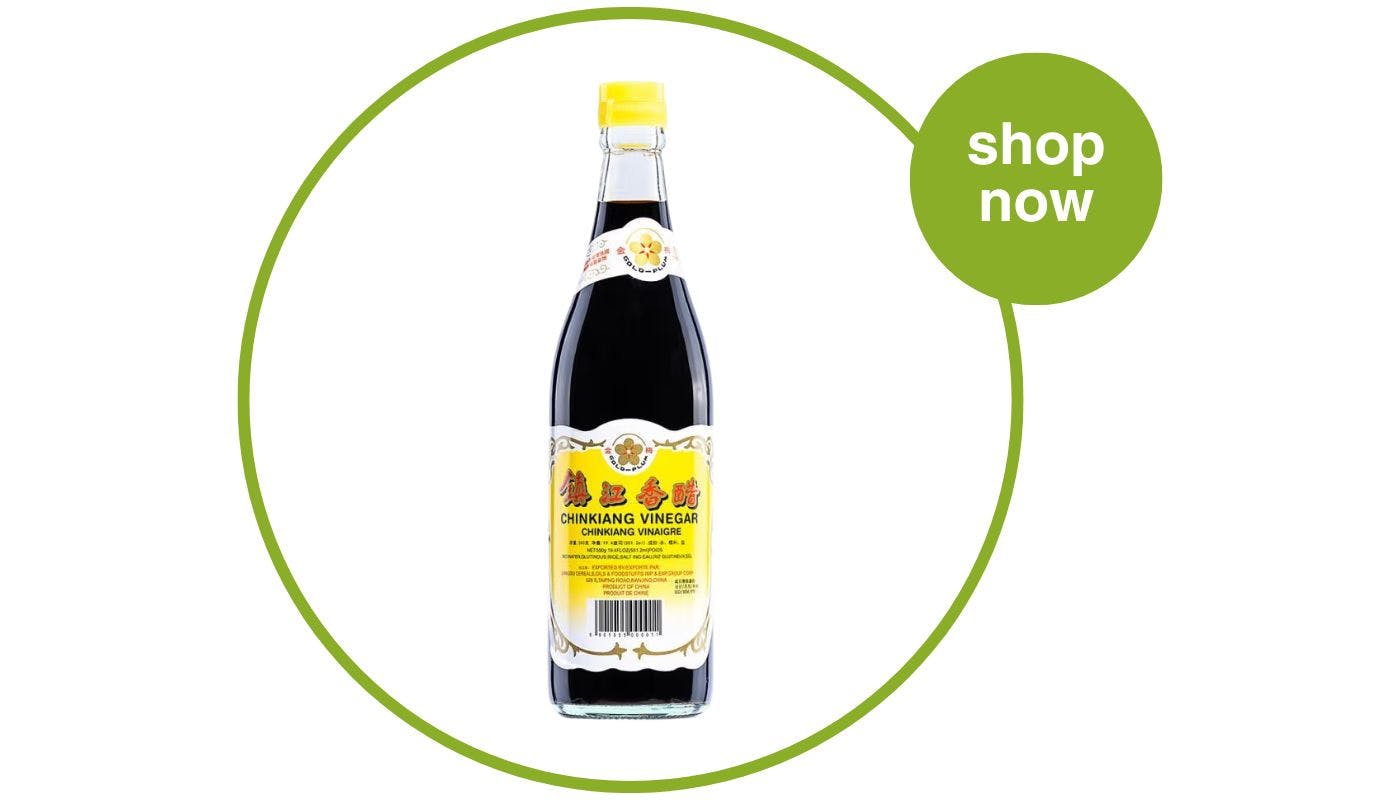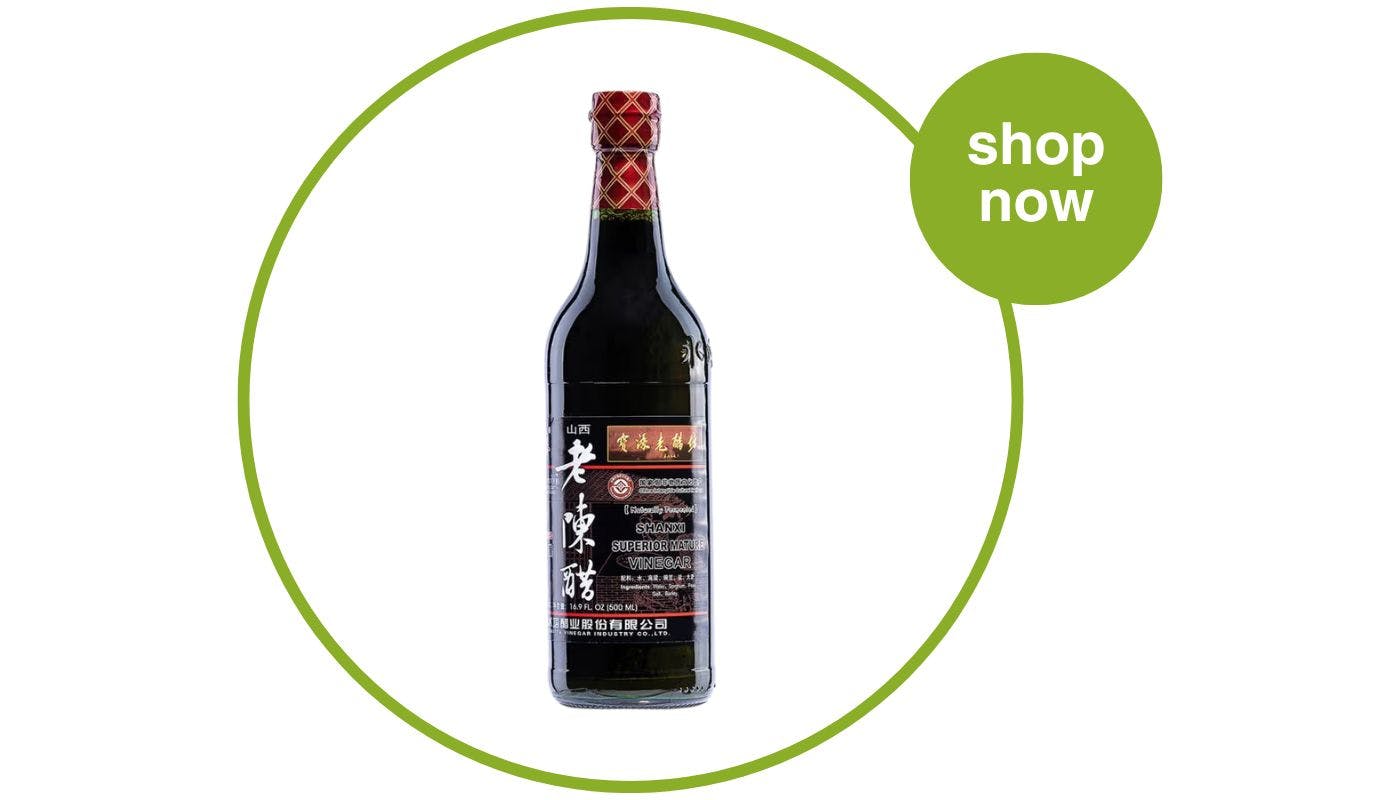your cart
Your cart is empty.
General Articles
A Guide to Chinese Vinegars
Chinese vinegars offer a tangy, complex flavour with a hint of sweetness. Discover how to use Chinese vinegar and the different types available.

Vinegar has long been a staple of Chinese supermarkets and around the world. It’s so key to Chinese cuisine that many legends of its origins are apparent in Chinese history. One such legend asserts that a deity, known as Lin Ziyuan, first invented vinegar in the Shanxi province, where lots of vinegar is still produced.
No matter how we became blessed with these secrets to great vinegar, there are now many variations produced in China, each offering something different for your food. Discover these stunning ingredients and how to use them in your cooking.
What Makes Chinese Vinegar Different?
All vinegar is made through a double-fermentation process, where a base product is fermented into alcohol, then fermented again so the alcohol is replaced with acids that produce the unforgettable tangy taste. Many different base ingredients are used worldwide, often connected to alcohol production, such as grapes (balsamic vinegar) and barley (malt vinegar).
One of the big differences with Chinese vinegars is that they are not typically made using leftover alcohols. Instead, the alcohol is gained by first transforming a starch, such as rice, into glucose through a process known as saccharification. This sweetened mash is then fermented to alcohol and then made into vinegar. All of this is helped along with Qu, a brick-like substance made up of molds and yeast which trigger fermentation.
As a result of this process and the ingredients used, Chinese vinegar tends to be less acidic and sharp compared to western vinegars. Instead, it offers a sweeter and more complex flavour with more umami.
Types of Chinese Vinegar (and How to Use Them)
Over the years, many types of vinegar have been produced in China. They can be grouped into three main categories based on their colour:
- Black Vinegar – A mild, complex and slightly sweet vinegar; often used both for cooking and as a dipping sauce.
- White Vinegar – A clear, acidic vinegar; often used in cooking to add sharpness and maintain the colour of the ingredients.
- Red Vinegar – A mild, sweeter vinegar; often used as a dipping sauce or garnish.
There are also the four “famous vinegars” – specific regional varieties that have become renowned both in China and across the world.
Zhenjiang Vinegar
Also known as Chinkiang, Zhenjiang is the most well-known variety of Chinese vinegars. Originating from the city of Zhenjiang, near Shanghai, this particular vinegar is thought to date back around 1400 years.
The key ingredients of this vinegar are steamed rice, barley, peas and wheat. Two different types of Qu are then used, with different mould varieties, to add flavour to the mix. The flavour and colour can then be adjusted by adding in water which has been filtered through rice which has been heated until black.
Zhenjiang vinegar is so popular that most Chinese black vinegars available in groceries stores worldwide are this variety, or a similar taste. It’s also incredibly versatile and can add a sweet tang to anything from soups to braised meats. Many Chinese recipes calling for black vinegar will be talking about Zhenjiang.
Shanxi Mature Aged Vinegar
Coming from the Shanxi province, this vinegar is incredibly popular throughout China.
Vinegar and Shanxi go back a long way, with this particular variety developed in 1368. Many legends originate from this area too. In addition to the tale of the deity, Lin Ziyuan, when fathers search for a husband for their daughters in Shanxi, he will only be considered suitable if he has a vinegar urn filled with Shanxi Vinegar!
Unlike many other Chinese vinegars, this one does not use rice; instead creating its base from sorghum. The amount of Qu added is usually considerably more than other vinegar types, with the substance making up around a third of the total mass.
As the name may suggest, Shanxi Mature Aged Vinegar must go through an ageing process before it can hit the shelves. One year is an absolute minimum, with three being a fairly standard amount of time. The pricier, premium vinegars will be left to rest for at least five years before being sold.
Sichuan Baoning Vinegar
Sichuan Baoning Vinegar was first created in 1618, as the Ming Dynasty collapsed. Baoning was created as a way to simplify the main base ingredients, in this case, wheat and bran, and make up for it with a more complex Qu.
The Qu used for Baoning vinegar incorporates many types of traditional herbs to both give the vinegar an incredible flavour, as well as offer up a number of reputed health benefits.
Made in the same region famous for Szechuan cuisine, it should come as no surprise that Baoning is particularly well suited to hot and spicy dishes, offering a stronger and more savoury taste than Zhenjiang black vinegar.
Fujian Yongchun Monascus Red Vinegar
Made in the southern province of Fujian, this vinegar is famous for its red colour. This splash of colour is added via the Qu, which, in this case, is made using a red mould. Other than the added Qu, it is almost exclusively made using rice.
Yongchun vinegar shares more similarities with western vinegars than the others on this list – it uses a liquid state fermentation process that’s much more in line with balsamic in France and sherry in Spain. It also shares the tangy sweetness of a sherry vinegar, although it is considerably milder than western fruit-based vinegars due to the rice starch.
Yongchun vinegar doesn’t have as many uses in Chinese cuisine beyond traditional Fujian dishes. However, it is popular as a tangy dipping sauce or garnish.
No matter what Chinese cuisine you’re enjoying, adding a touch of vinegar can add incredible depth to your food. If you’re looking to make a dish with traditional Chinese ingredients, check out our range of oriental vinegars!
this site uses cookies
We and our advertising partners use cookies on this site and around the web to improve your website experience and provide you with personalised advertising from this site and other advertisers. By clicking allow, you accept the placement and use of these cookies for these purposes. Learn More





